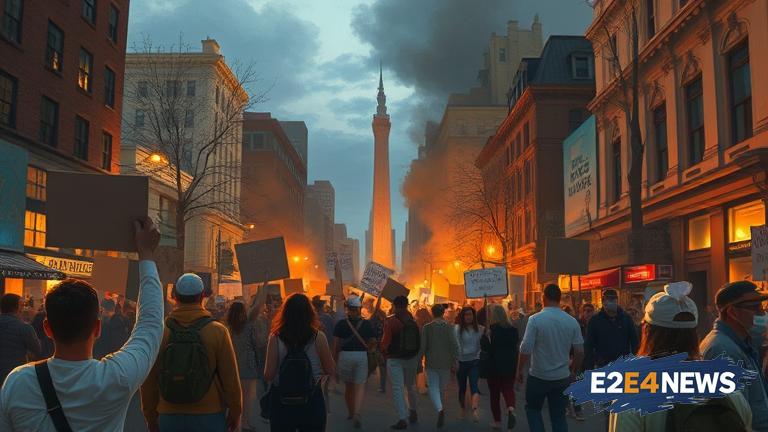The United States has witnessed a surge in protests, with thousands of individuals from diverse backgrounds coming together to voice their concerns and demand change. These demonstrations, inspired by the legacy of Congressman John Lewis, aim to bring attention to various social and political issues. The phrase ‘good trouble’ has become a rallying cry, symbolizing the willingness of protesters to challenge the status quo and push for reforms. The protests have been largely peaceful, with participants engaging in marches, sit-ins, and other forms of non-violent resistance. Despite the peaceful nature of the demonstrations, there have been instances of clashes between protesters and law enforcement. The use of social media has played a significant role in organizing and mobilizing protesters, allowing them to coordinate their efforts and amplify their message. The protests have also sparked a national conversation about the importance of civic engagement and the need for collective action to address societal problems. Many have drawn comparisons between the current protests and the civil rights movement of the 1960s, highlighting the ongoing struggle for racial equality and justice. The ‘good trouble’ protests have also highlighted the intersectionality of social issues, with participants advocating for a range of causes, including environmental protection, economic justice, and LGBTQ+ rights. As the protests continue to unfold, they have garnered significant attention from media outlets and politicians, with some expressing support for the protesters’ demands and others criticizing their methods. The impact of the protests on policy and social change remains to be seen, but they have undoubtedly contributed to a shift in the national discourse. The protests have also inspired a new generation of activists, who are leveraging their energy and idealism to drive positive change. Furthermore, the ‘good trouble’ protests have underscored the importance of community organizing and grassroots mobilization in bringing about social and political transformation. In addition, the protests have highlighted the need for greater empathy and understanding between different groups, as well as the importance of addressing systemic inequalities and injustices. The role of technology in facilitating the protests has also been noteworthy, with social media platforms and other digital tools enabling protesters to connect, coordinate, and disseminate information. However, the protests have also raised concerns about the potential for misinformation and the impact of social media on the spread of false or misleading information. As the situation continues to evolve, it is likely that the ‘good trouble’ protests will remain a significant feature of the national landscape, driving conversations and inspiring action on a range of social and political issues. The protests have also sparked a renewed interest in the life and legacy of Congressman John Lewis, with many reflecting on his contributions to the civil rights movement and his enduring impact on American politics. In conclusion, the ‘good trouble’ protests represent a significant moment in American history, highlighting the power of collective action and the importance of challenging the status quo in pursuit of justice and equality. The protests have also underscored the need for ongoing dialogue and engagement between different groups, as well as the importance of addressing the deep-seated social and economic issues that underlie many of the protests. Ultimately, the impact of the ‘good trouble’ protests will depend on the ability of protesters and policymakers to work together to drive meaningful change and create a more just and equitable society.
